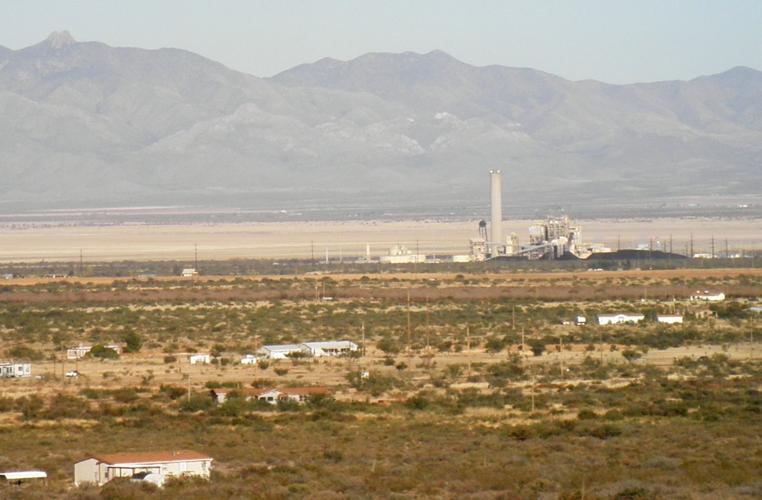Arizona contains a mixture of active and inactive structural landmarks representing a long and proven history of mining and energy production.
These landmarks of industry are captivating, having been erected during the industrial revolution of the 20th century and have met, or continue to meet, society’s insatiable demand for energy and metals.
Arizona’s early man-made, pre-eminent structures include smelters. The smelter at Superior, completed in 1924, and the surrounding roaster, furnaces and converter operated for nearly half a century before the Magma Copper Co. closed them in 1971.
Today amid reclamation work by Resolution Copper, the 300-foot smelter stack is the subject of preservation efforts by the local community. Ongoing debate continues about the costs of preservation, estimated to be $12 million, rather than $2 million for demolition.
Along Arizona 69 stands a 130-foot smelter stack erected by the Weber Chimney Co. of Kansas City in 1917 to serve the nearby Treadwell Mine. Although it never served as a smelter, a railroad spur was built to it by the Prescott & Eastern Railway.
A drop in copper prices following World War I curtailed the procurement of firebrick necessary to enable the structure to withstand the heat of smelting.
However, the current concrete shell supposedly can withstand 100 mph winds and heat up to 1,300 degrees. The inside diameter at the stack’s base measures 16 feet across at the top of the stack it measures 10 feet.
In the past, it was a popular destination for Mayer High School students who would burn tires at its base, pushing black smoke out of the stack to commemorate homecoming.
The nearby Humboldt Smelter just north of Mayer was rebuilt in 1906 after a fire destroyed it in 1904. It processed lead-zinc ore from the Iron King Mine until its closure in 1969.
It remains standing, having made a substantial contribution in ore processing in the Big Bug Mining District. The Dewey-Humboldt Iron King Mine and Humboldt Smelter Superfund site is currently under investigation because of ground contamination involving high concentrations of arsenic and lead.
The ASARCO smelter at Hayden is another iconic structure, dating back to 1912. It continues to serve mining operations throughout the state, including those at the nearby Ray Open Pit Mine. Its annual production exceeds 300 million tons of 99 percent pure copper.
Power plants are formidable and picturesque parts of the vast landscapes of Arizona.
The Navajo Generating Station, near Page, provides electricity to customers in Arizona and Nevada.
The station’s boilers produce steam and the turbines provide power. Production is 2,250 megawatts of electricity. It is powered by low-sulfur bituminous coal mined by the Peabody Western Coal Co. at the Kayenta Mine, 78 miles to the southeast. The coal is moved between the two by electric train.
The Palo Verde Nuclear Generating Station, on 4,000 acres in Tonopah, holds the distinction as the only nuclear power plant in the world not located near a large water source.
It is the largest nuclear plant in the United States. The plant currently uses 26 billion gallons of treated effluent, city water from Phoenix, 40 miles to the east.
It annually supplies 35 percent of electricity generated in Arizona. The plant began operating in 1988 and includes three combustion engineering pressurized water reactors. It serves 4 million people in four states, producing up to 4,000 megawatts of electricity.
The Apache Generating Station, 35 miles southeast of Benson in Cochise County, was built in 1963 and is owned by the Arizona Electric Power Cooperative.
The customer-owned utility serves 144,000 people in Arizona, New Mexico and California. Its prominent 400-foot-tall stack, two coal-fired generating units, one natural gas-fired boiler and four gas turbines are a landmark in the Sulphur Springs Valley.
Although environmental regulations, maintenance costs and alternative metals-processing methods have reduced the number of these leviathan structures across the state, the remaining structures stand as testimony to Arizona’s commitment to energy production and metal refinement.






